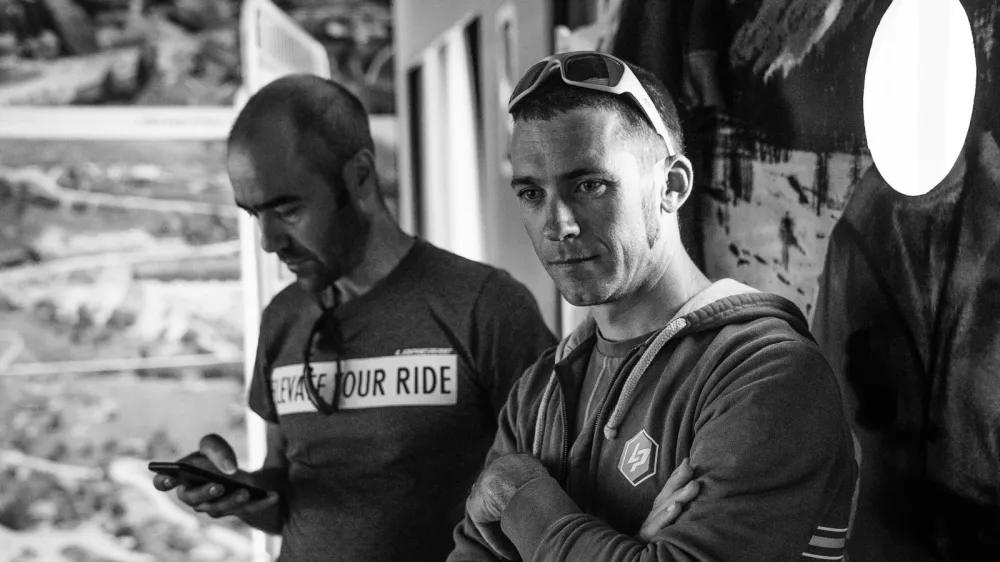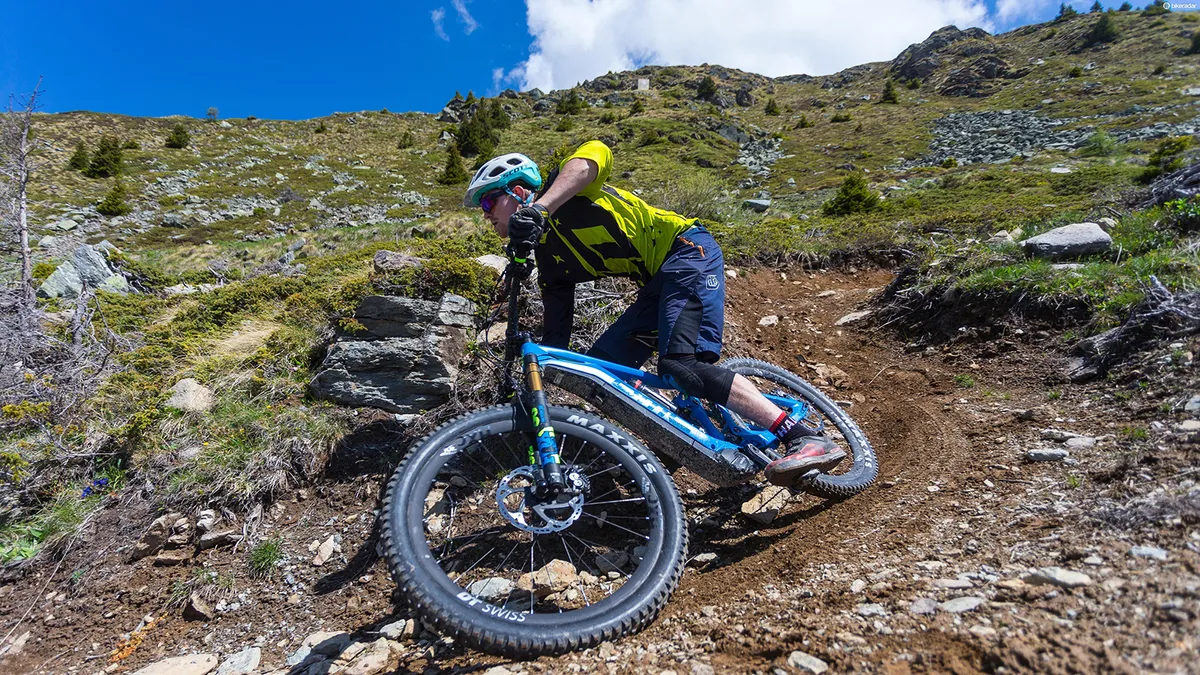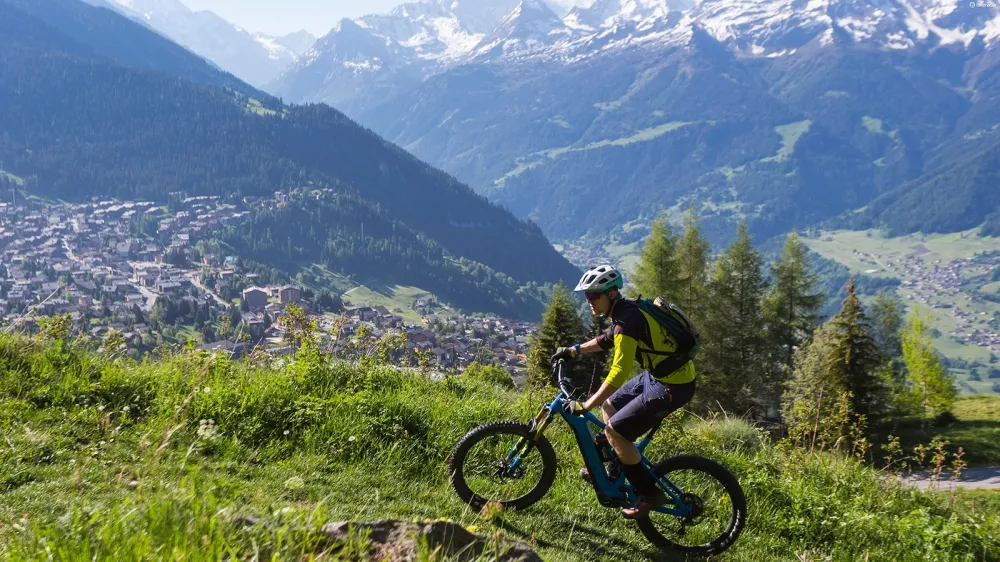Growing numbers of people are choosing to race their e-MTBs. We ask the people behind this new discipline just how and why they do it.
- This feature was inspired by the Scott E-Genius, one of BikeRadar's Headline Bikes for 2018. We've collated eleven bikes that we believe you should know about in the coming year. Some are super bikes, while others might display great value for money, but they all have one thing in common — they're all important bikes that show how incredibly varied road and mountain biking is today.
Here at BikeRadar, we think e-MTBs are brilliant. They make going uphill just as much fun as going downhill and allow you to do much more of both. And it seems we’re not the only ones who are fans of them — e-MTB sales now make up a growing part of many manufacturers’ bottom lines.
But buying and riding an e-MTB is one thing — racing it, however, is another matter. Surely a bike designed to make pedalling easier is totally at odds with the concept of racing? Well, more and more e-bike riders disagree.
E-MTB racing is a fringe part of the sport but it's starting to gain ground. The races usually follow an enduro format and are often just a separate category at an existing event.
I’m sure we’ll see some pro MTB riders dropping in and out of e-MTB class just to mix things up
In a way, this makes sense. Enduro racing has always been about taking it easy on the climbs — it’s on the downhills that things get serious. E-MTBs are well matched to this philosophy as they make the climbs easier and faster, allowing less-fit riders to participate in races that might otherwise be beyond their stamina. It also lets race organisers use trails that might be out of reach for the average rider.
Many enduro races already make use of chairlifts or vehicle shuttles, so why not replace the diesel uplift van with an electrically assisted bike?
To find out more, we got in touch with Richard Dobney, UK representative of Haibike, the brand that sponsors the UK Mini Enduro and Welsh Gravity Enduro series, both of which host an e-MTB category.

BikeRadar: Has there been much opposition to e-MTB races or e-MTB categories in enduro?
Richard: Not at all! By its nature, enduro is a perfect fit for e-MTBs. Most people are down with idea of painless transitions! The banter is super friendly — in fact there’s been a few shouts of “give us a lift mate!” from the analogue riders. If that’s as bad as it gets I think we’re going to be okay!
How do you see the sport progressing?
More fun. Events like Mini Enduro, Welsh Gravity Enduro series, ‘Ard Rock and the upcoming return of the Malverns are great for getting people together and having a blast on bikes — UK e-MTBers in general are riding purely for fun. It’s also fair to say they’re a curious bunch — exploring new riding spots is second nature when you have more control over your energy reserves.
Inevitably there will be riders taking it more seriously. I’m sure we’ll see some pro MTB riders dropping in and out of e-MTB class just to mix things up. We’ve already explored avenues with the Mini and Welsh Gravity series by adding ‘e-MTB only’ climbing sections into them, which amounts to an extra stage designed to push e-MTBers that little bit further.
It’s likely we’ll see more endurance-style races appearing where the riders must really think about where and how they use their energy reserves. We may even see some standalone e-MTB-only UK events in the very near future.
What role will technology play in the development of the sport?
With the boom in sales for e-MTBs, especially here in the Alpes-Maritimes, there is very little resistance towards racing them
I suppose from a cycling perspective e-MTBs are already seen as tech-heavy and, of course, we’re constantly looking at how to eke out every drop of performance — whether it’s gravity casing in tyres to reduce vibration and increase power transfer efficiency or carefully placed jockey wheels to reduce motor-induced suspension bob, it all counts. Systems manufacturers are ramping up their development processes too with more attention being paid to ergonomics.
We’re seeing development going in two directions right now. Of course, integration is popular this coming year, which satisfies riders aesthetically, but, on the other side, performance will pull things in a different direction. I don’t think we’re done deciding what the e-MTB archetype should look like.
We’re also seeing some simple refinements creep in, such as shorter crank lengths to allow better climbing clearance (pedal strikes are quite commonplace as e-MTBers tend to choose the technical climbing lines). It’s a two-way street, of course — racing is always a great push for tech!

We also got in touch with Kieran Page, the Lapierre brand ambassador/product tester and e-MTB racer with plans to organise e-MTB racing in the south of France.
BikeRadar: Is there much opposition to e-bike racing in your experience?
Kieran: With the boom in sales for e-MTBs, especially here in the Alpes-Maritimes, there is very little resistance towards racing them. We've been through the initial phases of not knowing what an e-MTB is, to them being belittled, then them getting recognition as machines in their own right, and now they've finally been accepted by the majority. Numbers of participants in e-MTB races have risen from a paltry 10 or so, to roughly 50 per event since the end of 2016.
For me the biggest resistance has been due to the incompatibility of e-MTB technology with all current race formats. It is easy to criticise these bikes as being "soft" or "for cheats" if they're being ridden on circuits designed for mountain bikes. As soon as a circuit or special stages are adapted to the potential of e-MTBs then they are no longer 'the soft option'.
A race is still a race no matter what machine you are on. From experience, it's just as hard to race e-MTBs as it is mountain bikes — you're still trying 100 percent to go as fast as you possibly can.
Racing is a mindset — people who are competitive will always want to compare themselves to others
How do you see e-MTBs and e-MTB races progressing?
To continue developing e-MTBs, they have to progress from being a fashion item to being a standalone discipline. They must be marketed correctly — [manufacturers can't concentrate] solely on racing, as 'win on Sunday, sell on Monday' won't work for the majority of buyers. The element of racing will obviously influence a certain cross-section of people, as it does in motorcycling.
But the potential for e-MTBs is far broader and should be developed as such. Yes, you can race them and that should be catered for, but you can also have a nice, chilled ride with friends, which is far less intimidating. E-MTB events will probably reflect this and randonnée-style rides with optional timed sectors is a hybrid that could be explored.
Do you think technology (such as better geometry, lighter batteries, longer range and so on) could help popularise e-MTB racing as a sport?
It will make the challenges presented to organisers and racers more difficult to deal with, but no I don't think it will. The bikes are already incredibly capable… but when it comes to racing it never gets any easier, you just go faster.
Racing is a mindset — people who are competitive will always want to compare themselves to others. The popularisation of e-MTB racing will come from the grassroots up — more bums on seats equals more fingers around handlebars.
BikeRadar would like to thank Brittany Ferries, the Commune of Peille, France, and Kieran Page at La Maison des Activities de Pleine Nature de Peille for their help and support during our Headline Bikes test.


